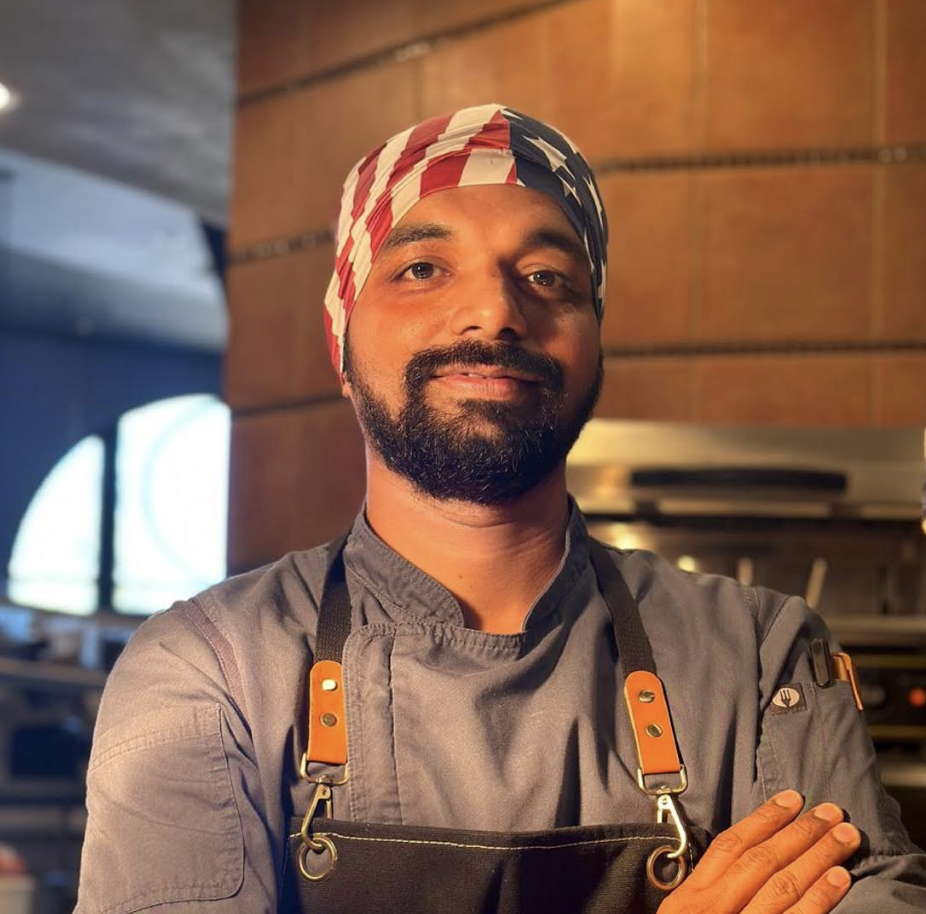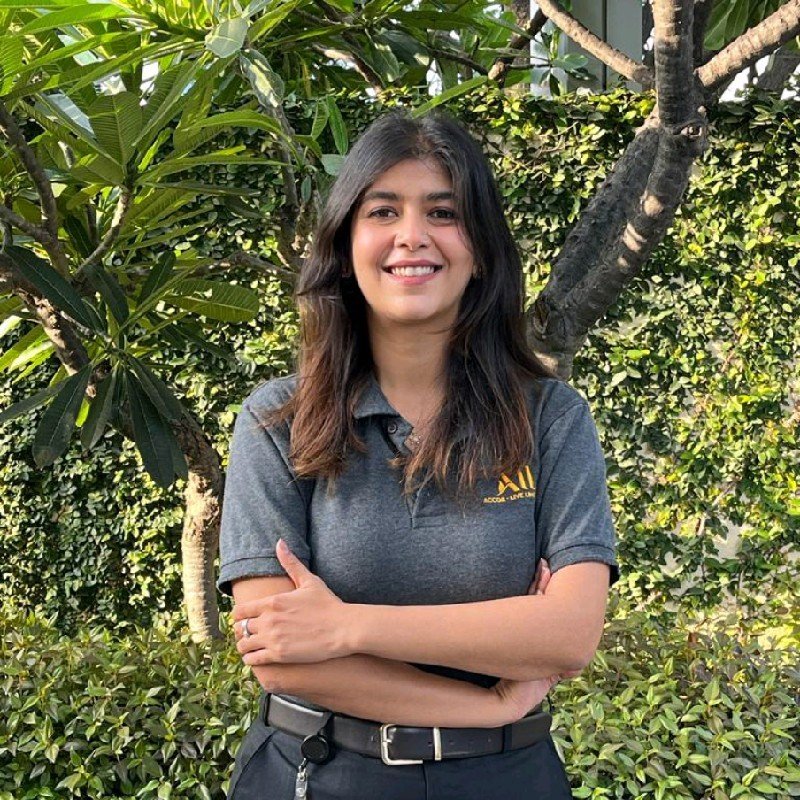Exclusive Interview | Chef Siddharth Parab, Executive Chef at SpiceKlub USA in Cupertino, California
/“Integrity, innovation, and respect for tradition are my guiding principles. I believe in constantly pushing the boundaries of what Indian cuisine can be, while staying true to its roots.”
Your expertise in molecular gastronomy has transformed traditional Indian cuisine. What inspired you to delve into this niche culinary field, and how has it shaped your career?
My inspiration for molecular gastronomy came from a deep-rooted curiosity about the science behind food. Indian cuisine has a rich tapestry of flavours and traditions, but I was intrigued by the possibilities of exploring its ingredients at a molecular level. By applying techniques like spherification, foaming, and liquid nitrogen freezing, I saw the potential to create multisensory experiences that would surprise and delight diners, all while preserving the essence of traditional Indian flavours.
This journey has undoubtedly shaped my career, allowing me to innovate and push boundaries. It has given me the opportunity to fuse tradition with modernity, creating dishes that stay true to their roots while offering a fresh perspective. The impact has been profound, opening doors to international recognition and allowing me to craft a unique culinary identity.
At SpiceKlub USA, you lead a team that reinvents everyday Indian recipes. How do you balance modern techniques with the authenticity of traditional tastes?
Balancing innovation with authenticity starts with respect for the traditional flavours and methods that define Indian cuisine. The heart of any dish, whether it’s the rich spices of a curry or the smokiness of tandoori, remains true to its origins. Modern techniques like sous-vide or foaming are used to enhance, not replace, these flavours. For instance, we might turn a chutney into a foam or encapsulate a curry, but the taste remains familiar.
Precision in spicing and a focus on cultural sensibilities are key. We ensure that, while the presentation might be modern, the soul of the dish—its flavours and essence—stays rooted in tradition.
Molecular gastronomy is a growing trend in the culinary world. How do you incorporate scientific methods while keeping the dishes approachable for diners?
The key is to anchor dishes in familiar flavours, even if their textures or presentations are unique. For instance, a deconstructed pani puri may look different, but it retains the beloved flavours of mint and tamarind. Gradually introducing modern twists, like a foam or a sphere, ensures diners aren’t overwhelmed. We also engage with diners, explaining the techniques behind the dishes in a simple, accessible manner, which helps demystify the science.
Ultimately, molecular techniques are about enhancing the dining experience. We use them to surprise and delight, but always in a way that keeps the dish approachable and enjoyable.
Your career spans various roles, from Smaaash Entertainment in India to SpiceKlub in the U.S. How has working in different regions influenced your culinary style?
Working across different regions has exposed me to a diverse range of ingredients, techniques, and culinary traditions. Each location, whether in India or abroad, has its own unique flavours and approaches to food. This has allowed me to fuse elements from various cuisines, creating innovative dishes that are grounded in tradition but have a modern twist.
Moreover, adapting to different cultural preferences has taught me to be versatile and sensitive to local tastes. It has broadened my culinary repertoire, helping me craft dishes that reflect both global influences and the rich heritage of Indian cuisine.
You’ve managed multiple kitchens, each with its unique challenges. What strategies do you implement to foster creativity and maintain high culinary standards?
A unified culinary vision is essential. I ensure that every kitchen I manage follows a consistent philosophy, while empowering local leadership to make decisions that suit their unique environments. Regular training sessions and creative brainstorming days help keep the team inspired and up-to-date with the latest techniques and trends.
Cross-kitchen collaboration is another key strategy. By rotating chefs between locations and sharing best practices, we foster a culture of learning and innovation, ensuring that creativity flourishes while maintaining the highest standards.
At Lodha Group, you enhanced both café and banquet operations. What key innovations did you bring to these settings, and how did they impact the overall dining experience?
At Lodha Group, I focused on customisation and sustainability. In the cafés, we introduced modular menus that allowed for personalised orders, while the banquet operations featured bespoke event menus tailored to individual preferences. We also integrated technology, from digital ordering systems in cafés to event planning software for banquets.
Sustainability was a core focus, with an emphasis on local sourcing and eco-friendly materials. These innovations not only streamlined operations but also elevated the dining experience, offering guests a more personalised and environmentally conscious approach to food.
You’ve been instrumental in teaching and refining culinary techniques throughout your career. What role does mentorship play in your leadership style as an Executive Chef?
Mentorship is at the heart of my leadership style. It’s about fostering skill development, creating an environment where knowledge is freely shared, and empowering my team to grow creatively.
Encouraging collaboration within the kitchen is key to maintaining high standards, and it also helps junior chefs build confidence and take ownership of their work.
Mentorship ensures continuity, as it prepares the next generation of chefs to carry on the traditions while innovating boldly. It’s incredibly rewarding to see young chefs evolve and bring fresh ideas to the table.
What is your process for developing new dishes, and how do you ensure that they resonate with customers who may be unfamiliar with molecular gastronomy?
My process starts with researching ingredients and flavour pairings, drawing inspiration from both tradition and modern culinary trends. Once I’ve explored the possibilities, I experiment with molecular techniques to enhance the dish while keeping the core flavours intact. Prototyping and rigorous taste testing follow, ensuring the dish is balanced in both taste and presentation.
To make molecular gastronomy more approachable, we focus on clear communication, explaining the techniques in simple terms and often offering tasting events where customers can experience the dishes firsthand. This bridges the gap between the unfamiliar and the familiar.
What are some of the core values you follow as a chef to enhance your reputation?
Integrity, innovation, and respect for tradition are my guiding principles. I believe in constantly pushing the boundaries of what Indian cuisine can be, while staying true to its roots. Sustainability is another key value, ensuring that my approach to food is environmentally responsible. Collaboration and mentorship within my team are equally important, as they ensure continuous growth and maintain the highest culinary standards.
Looking ahead, what are your long-term goals for your culinary career, and how do you plan to continue pushing the boundaries of modern Indian cuisine?
My long-term goals include continuing to innovate within the realm of modern Indian cuisine, with a strong focus on sustainability and education. I aim to establish a flagship restaurant that fuses tradition with modern techniques, creating a culinary destination that celebrates Indian cuisine in a contemporary way. I also plan to mentor aspiring chefs and share my knowledge, ensuring that the future of Indian cuisine remains dynamic and progressive on a global stage.







